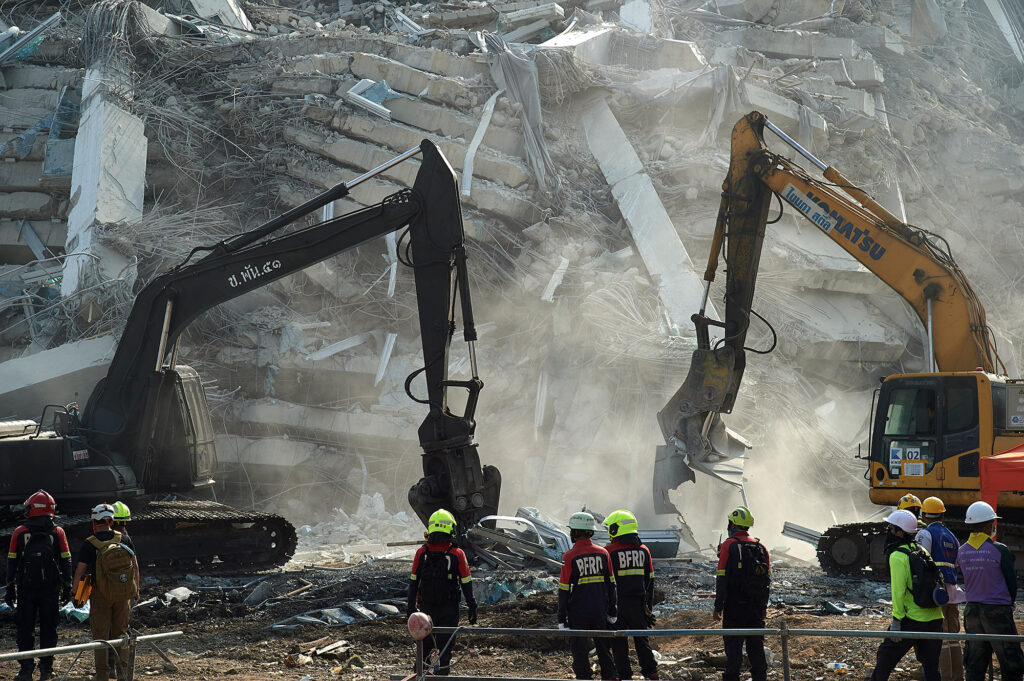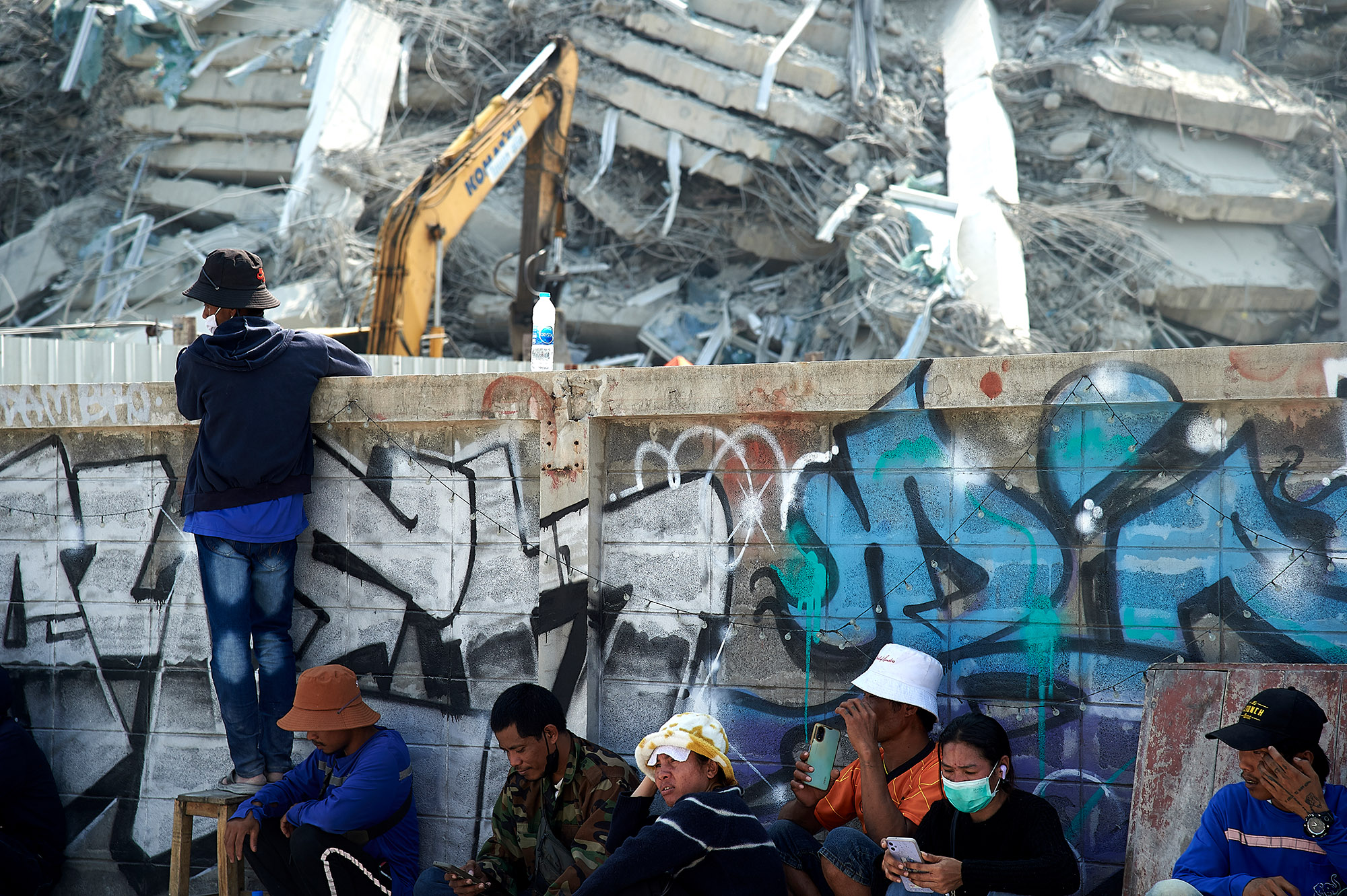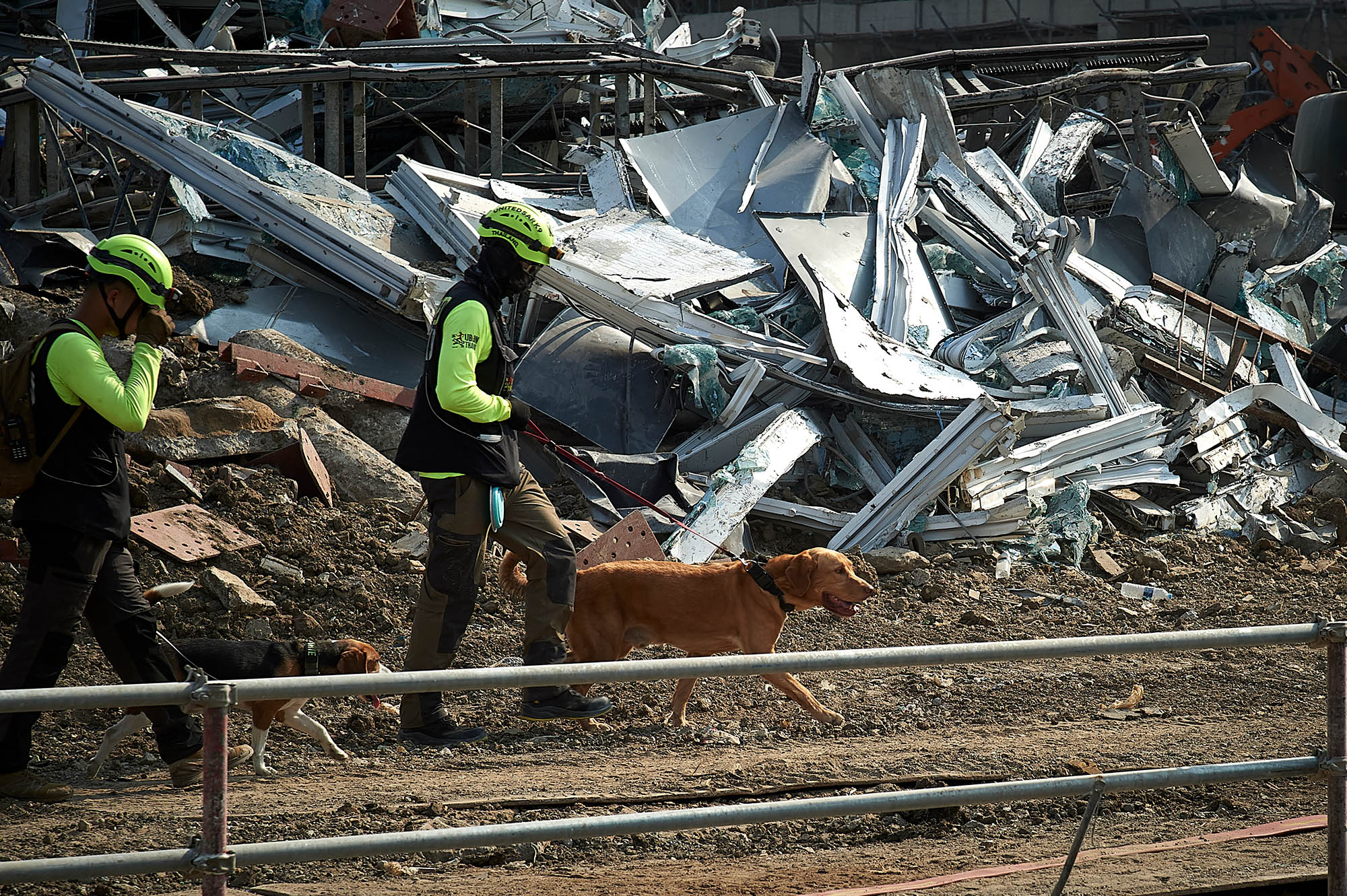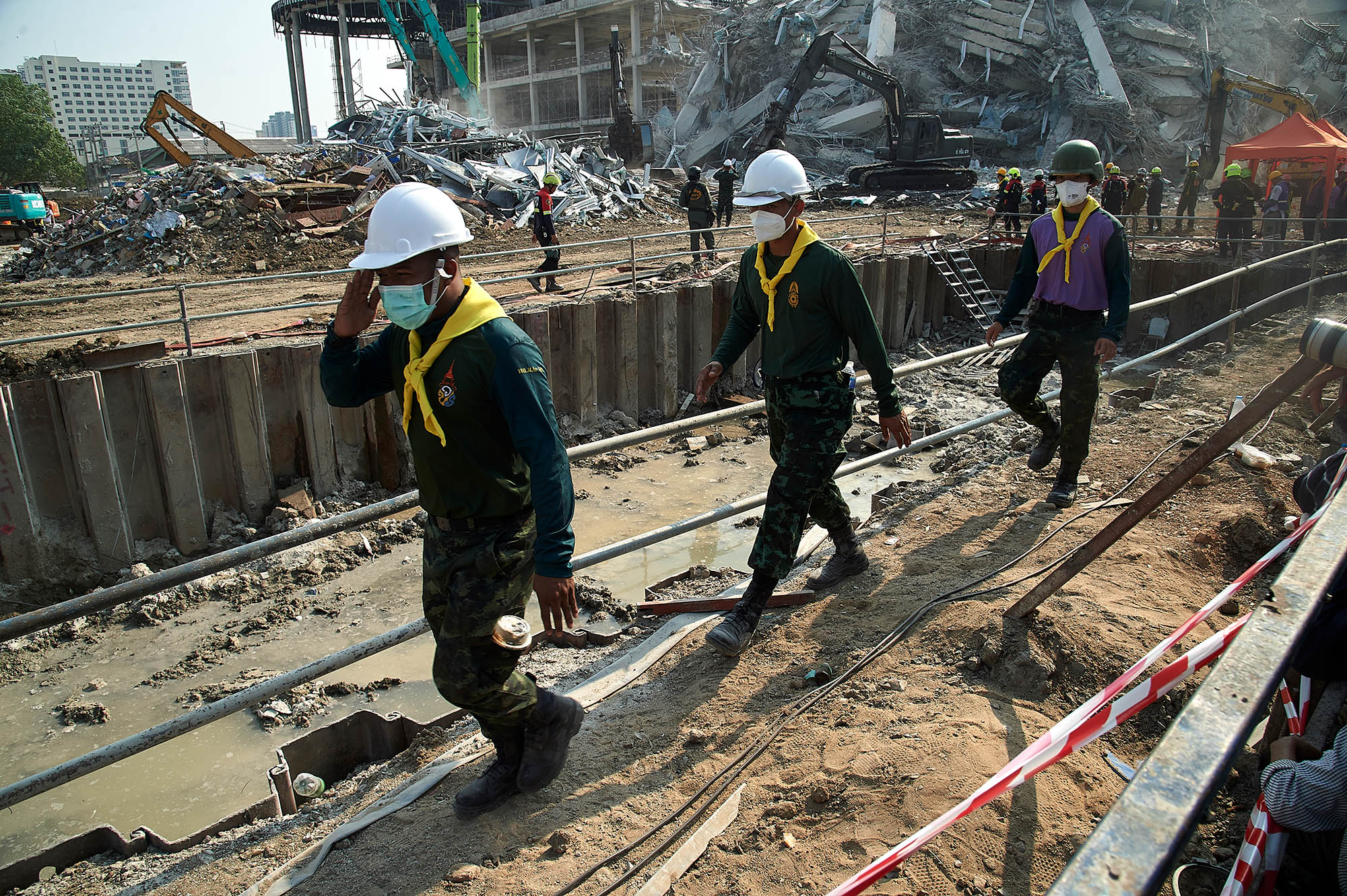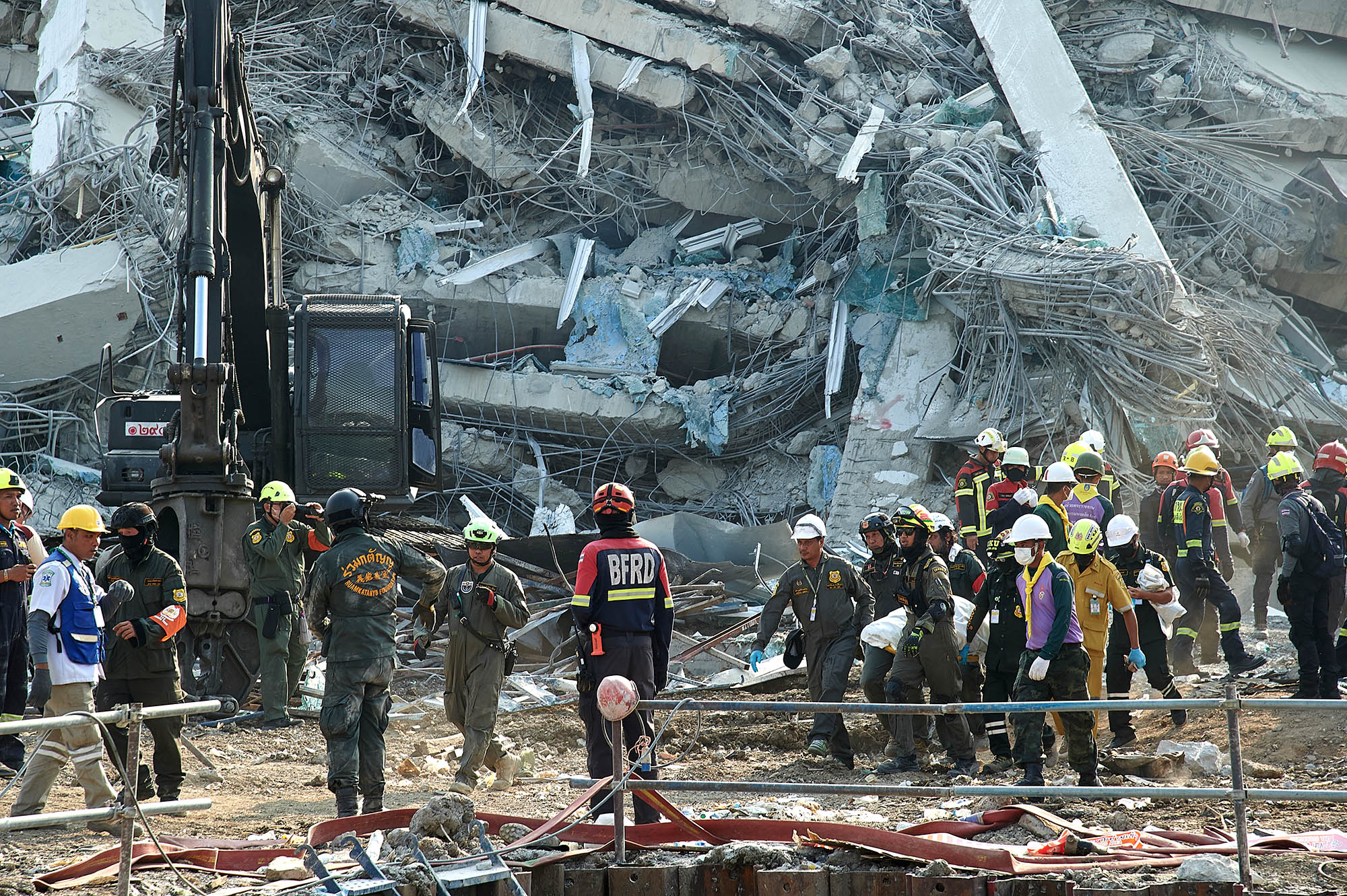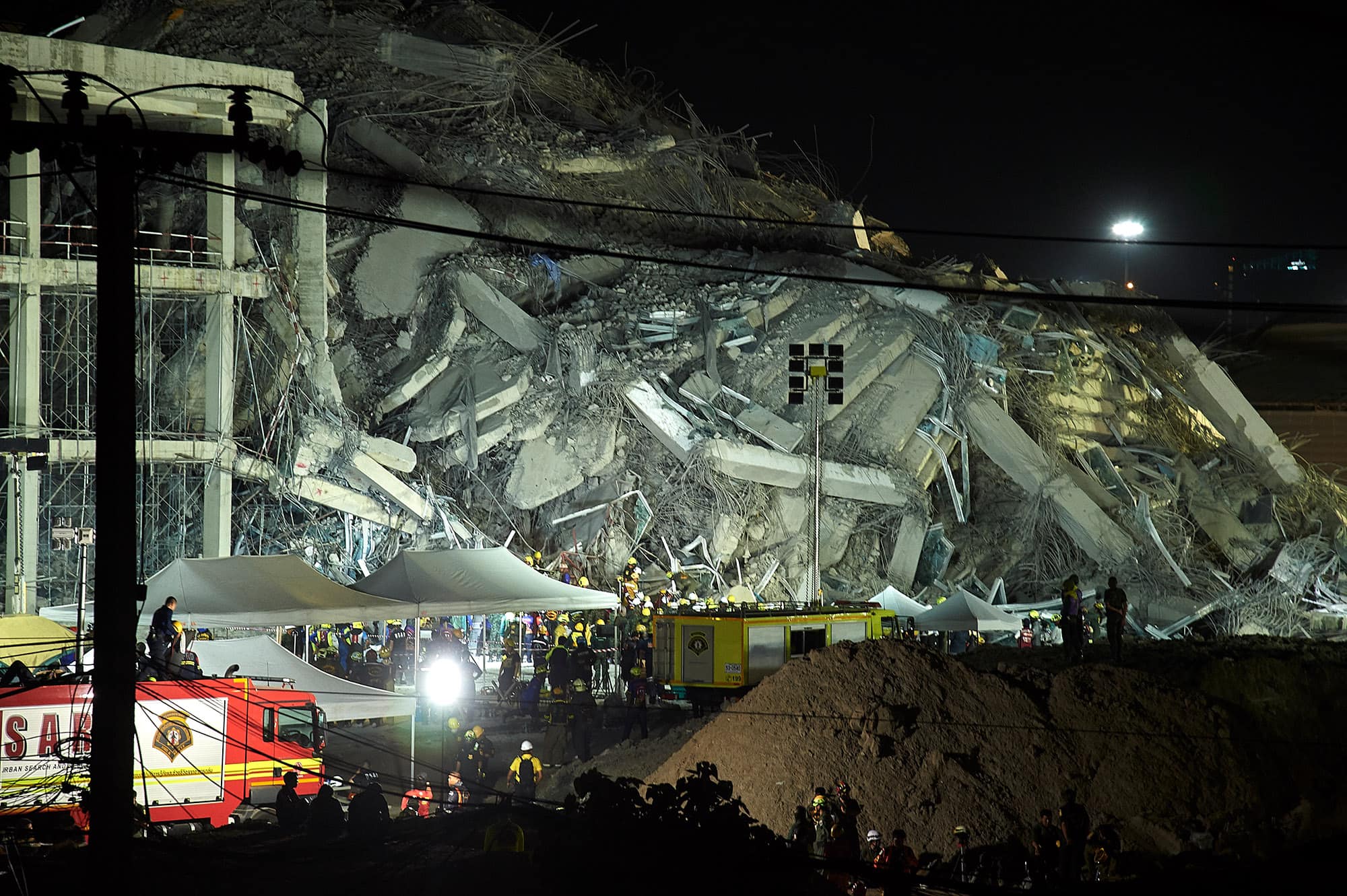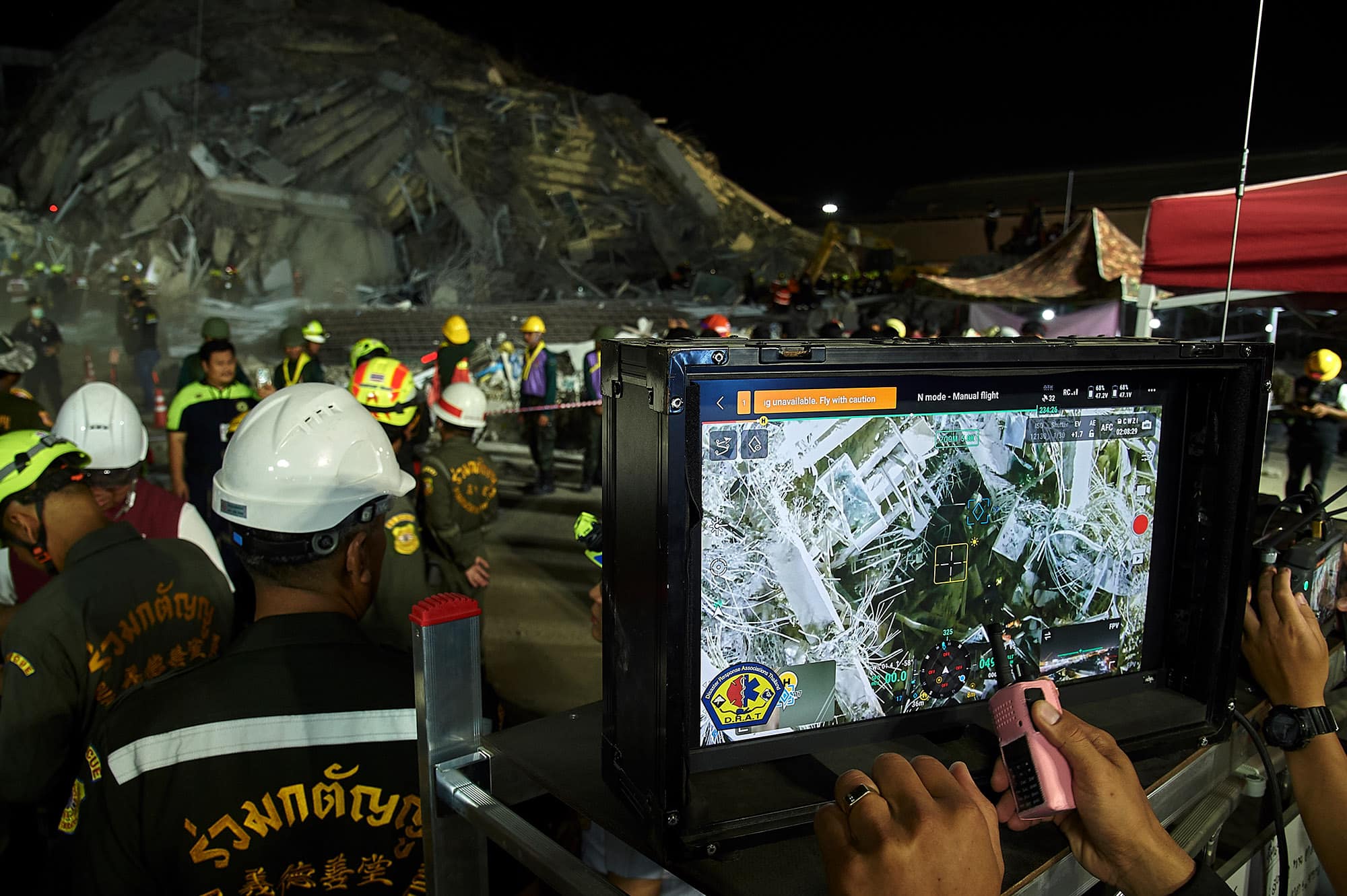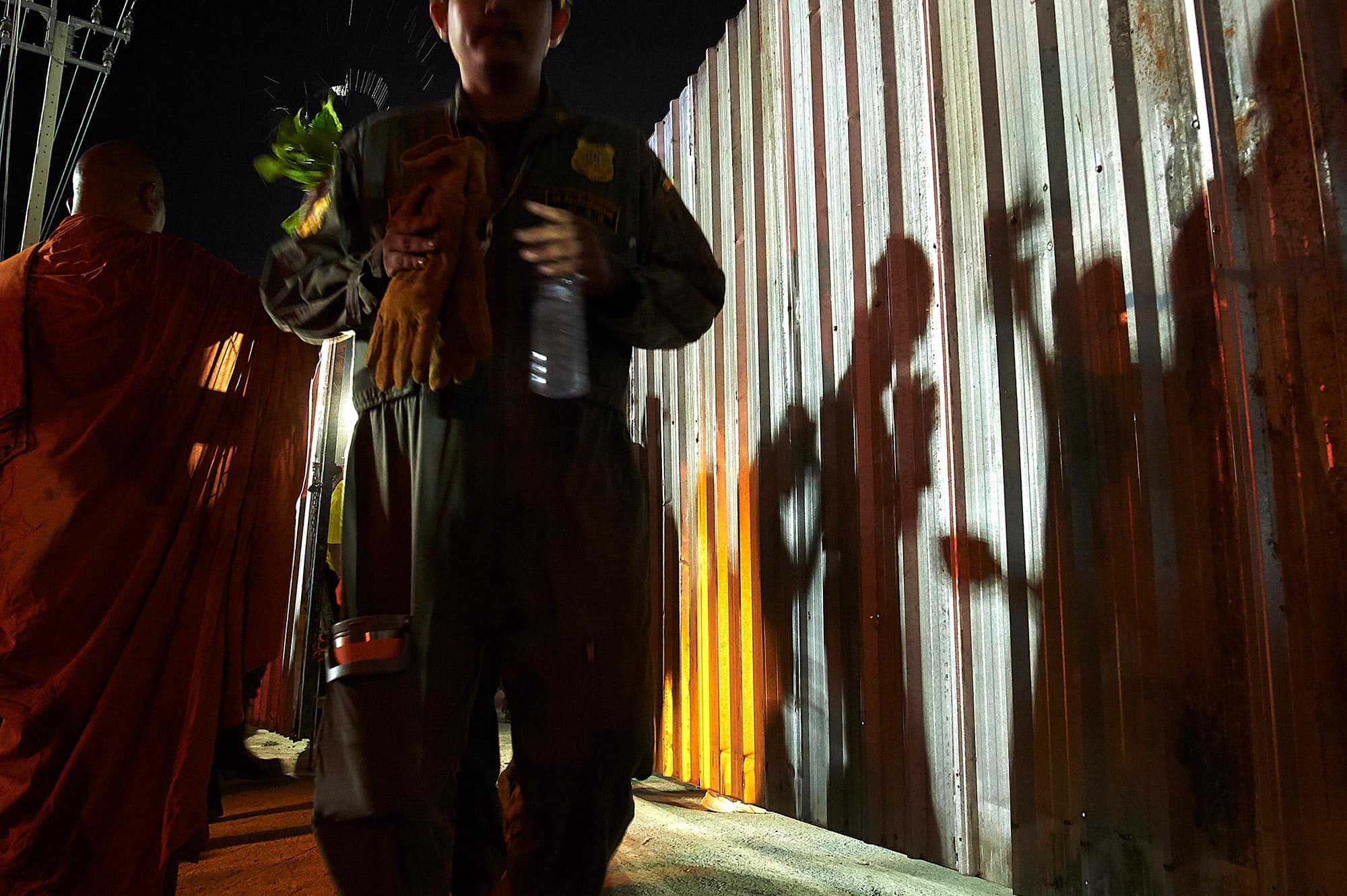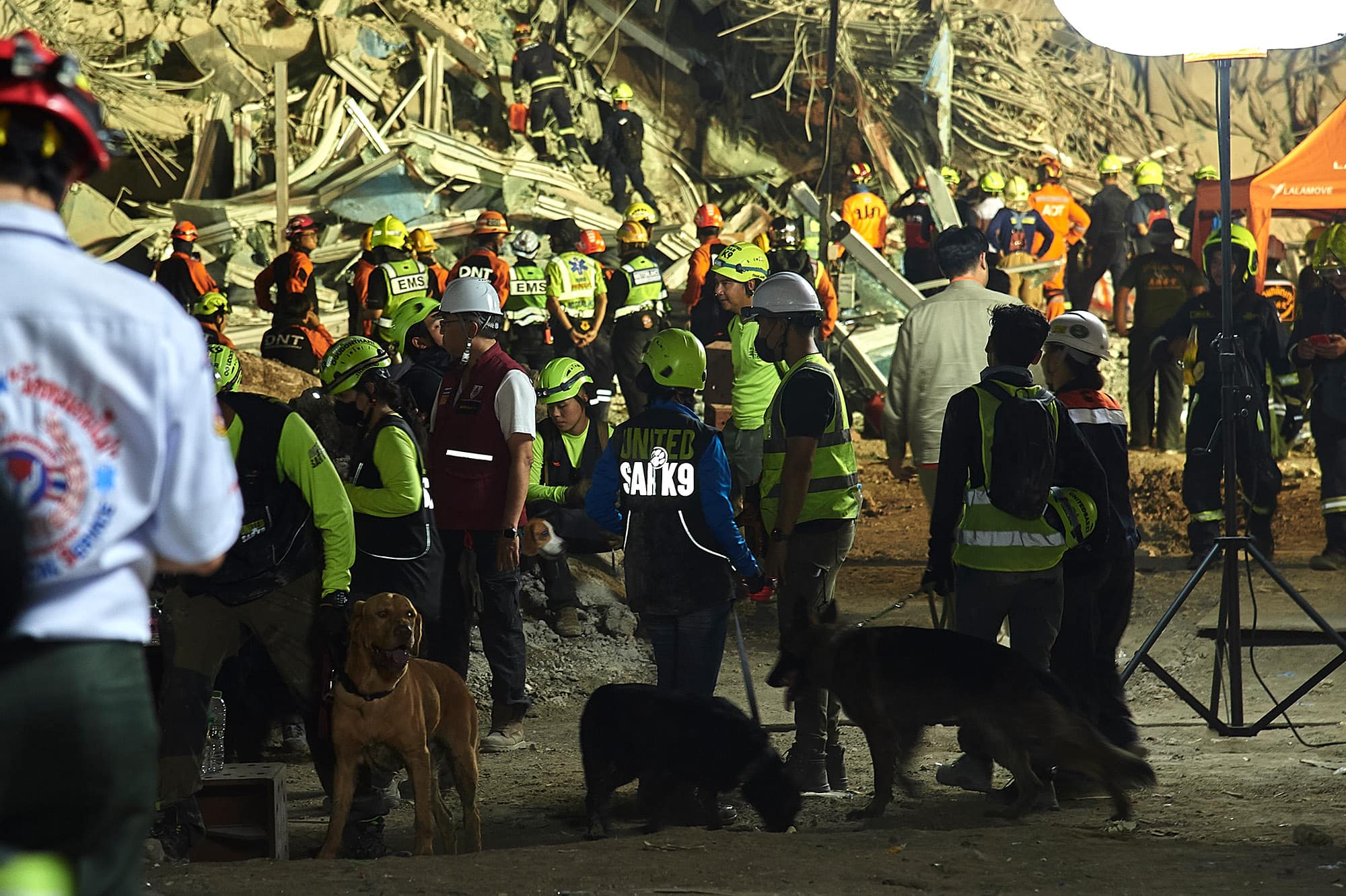A powerful earthquake of 7.7 magnitude hit Myanmar in the afternoon of March 28, with the epicenter located around 10 km deep in the notable Sagaing Fault close to Myanmar’s second largest city, Mandalay, sending waves to rock its neighbours, including Thailand, as well as their poorly prepared disaster preparedness
As the last 24 hours of the life-and-death hours 72, the period known as a critical state of people’s lives when a dying process starts as vital organs would begin to cease functioning, have arrived, Governor of Bangkok, Dr. Chadchart Sittipunt, said the rescuers at the under-construction State Audit Office buiding, which had completely collapsed following the jolts of the earthquake, have not yet lost hope. Instead, they are still trying to search and rescue the workers trapped inside with their utmost efforts and full capacity.
Over the past two days, the city, in charge of the situation, has drawn support from hundreds of rescue organisations and state agencies, including the military and K9 USAR Thailand, a well-trained rescue dog organisation, to help in the operation.
Dr. Chadchart said the team has also received assistance from many countries, including the United States, China, and Israel, which will send additional equipment to support his administration.
As of last night, the Bangkok Metropolitan Administration (BMA) reported that at least 96 workers were found working at the site when the earthquake struck. Eight of them were dead, one reported to the authorities himself, another eight got injured, while 79 more are still missing. Of 79, the rescue team could locate at least 30 of them inside the building, while 49 are still unlocated. Throughout the capital, 11 were dead, 32 injured, and 83 missing.
The Governor said the rescuers have detected some vital signs in Zone A of the State Audit building, and will intensify their efforts to locate and rescue those still showing signs of life. The Governor said the operation is proceeding according to established protocols, with experts providing guidance on-site.
More fatalities were reported this morning, but the official number is still awaiting confirmation.
l Rescue efforts at the collapsed State Audit building in Chatuchak area over the past two days, March 28-29. Photos: Sayan Chuenudomsavad
“We have not yet lost hope, and I would like to assure you that we are proceeding with our best because we believe there is still a chance of finding survivors inside,” Dr. Chadchart stressed, adding there is 60% chance of rain that could hamper the efforts but he was assured that the structure is still packed by steel.
Yesterday he also kicked off the administration’s initiative to examine buildings throughout the capital to ensure safety for city residents. People who have discovered cracks on their residences can report to the BMA through the Traffy Fondue application, and the office will send professional engineers who volunteer to help the BMA to check those cracks and verify the situation for them. If they cannot live inside their residences or buildings, they will be provided with temporary shelters to stay.
As of this morning, over 9,500 cases have been reported to the BMA so far. The engineering team will go out to check over a hundred more today. The Governor has also issued the latest order asking owners of large buildings to inspect their properties through regular annual checks and report to the BMA every day within the next two weeks to ensure safety and no development of cracks or damage on their properties, if any.
Nationwide, damages have also been reported in 14 provinces, several of which are major cities in the North, including Chiang Mai, Chiang Rai, Lampang, Sukhothai, and others.
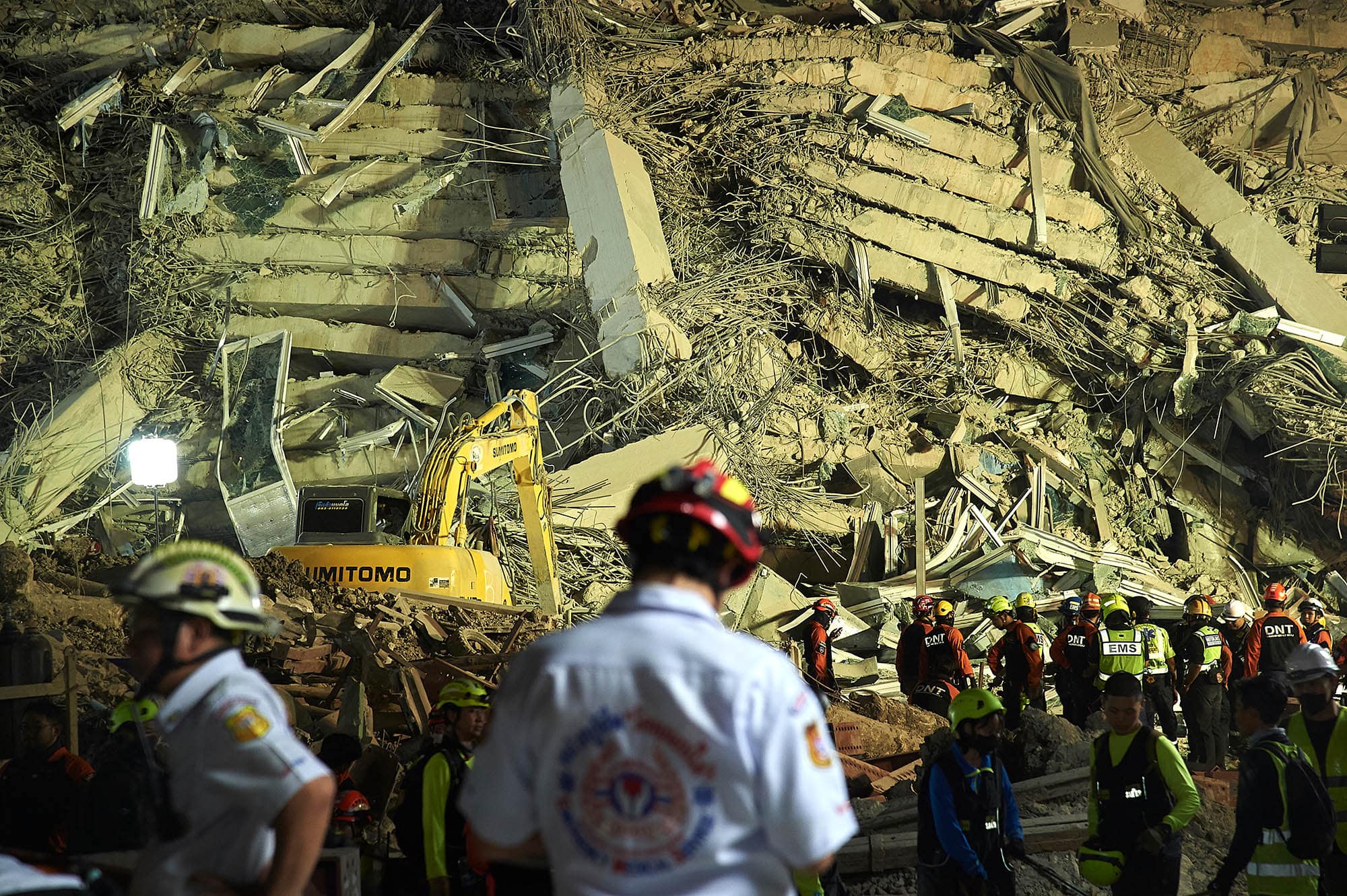
The major one
A powerful earthquake was first reported in the country by the Meteorological Department (TMD) at 1.31 pm on its Facebook Page, but the department simply stated that “there were tremors felt by people in several areas, including Bangkok”. The message was relayed again around 10 minutes later, at 1.42 pm, with more detail given that said “there was an earthquake of 8.2 magnitude on the Richter scale with epicenter located around 10 km deep near Mandalay in Myanmar”.
The department attempted to send the message to people agian via FB Live one hour later or 2.11 pm, before other agencies followed and released more information including aftershocks on their platforms.
Prime Minister Paetongtarn Shinawatra quickly grasped the situation, calling for an emergency meeting with her Cabinet members, who joined her in the government trip in Phuket to review it before briefing the public on television about the situation as well as immediate measures she instructed the agencies concerned, at around one and a half hour later, or around 2.30 pm.





Those included the immediate dissemination of the information to the public through SMS and cell broadcast, the system through which text messages could be sent to the targets in a large number at once. At present, the manual SMS message dissemination by the networks can send 200,000 at once. There reportedly are 100 million phone numbers in the country.
It was learned later that the SMS was delayed and messages reached people several hours later, more than six or seven hours at least. The PM on the next day called for a major meeting with all concerned agencies to discuss the problem and try to allay public concerns with additional measures and instructions.
By then, public sentiment had grown against the government’s reaction and the early warning and public alert system. The PM was also dissatisfied with the reactions of the agencies under her supervision. She asked them to explain to her as she had to explain to the people, saying what needed to be done and could be done more, as she, in her capacity as the Prime Minister, and her Interior Minister had already swiftly instructed them in the first hours of the incident.
As monitored by Bangkok Tribune, it was the BMA that quickly grasped the situation and relayed the message from the TMD. The Governor also swiftly set up the capital’s Emergency Command Center almost the same time that the TMD tried the second time to relay its message on FB Live at 2.11 pm. The Interior Ministry issued an order to set up the national command center around 6 pm, while elevating the situation to Level 3.

Sagaing Fault
The U.S. Geological Survey, one of the most trusted resources about earthquakes in the world, posted about the incident on its FB page for the first time at 1.42 pm, informing about a notable quake with M 7.7 at 16 km NNW of Sagaing, Myanmar, with the depth at 10 km (6.21 mi).
The official department of the US government identified it as the potential mainshock of an earthquake sequence. The first aftershock was recorded 12 minutes later, or 1.32 pm was measured as large as 7.1, before its scale was reduced over time.
According to the USGS, this M 7.7 earthquake occurred as the result of strike-slip faulting between the India and Eurasia plates. Its examination shows that the slip occurred on “either a north-striking, steeply-dipping, right-lateral fault, or a west-striking, steeply-dipping, left-lateral fault”. The finite fault solution indicates a north-striking right-lateral fault. The examination and tools are consistent with the earthquake potentially occurring on “the right-lateral Sagaing Fault” that lies in the fault zone that defines the plate boundary between the Indian and Sunda plates.
“While commonly plotted as points on maps, earthquakes of this size are more appropriately described as slip over a larger fault area. The finite fault solution indicates the size of the March 28 event is about 200 km (length) by 20 km (width),” noted the USGS.
The USGS further noted that this region has experience similar large strike slip earthquakes, with six other magnitude 7 and larger earthquakes occurring with about 150 miles (250 km) of the March 28 earthquake since 1900.
The most recent of these was a magnitude 7.0 earthquake in January 1990, which caused 32 buildings to fall. A magnitude 7.9 earthquake occurred south of today’s earthquake in February 1912. Within this broad zone of tectonic deformation, other large earthquakes, including a magnitude 7.7 earthquake in 1988, have caused dozens of fatalities, the USGS said.
In Myanmar, international media outlets have reported extensive damage in Mandalay and the region, with over 1,600 deaths reported so far.
Indie • in-depth online news agency
to “bridge the gap” and “connect the dots” with critical and constructive minds on development and environmental policies in Thailand and the Mekong region; to deliver meaningful messages and create the big picture critical to public understanding and decision-making, thus truly being the public’s critical voice

